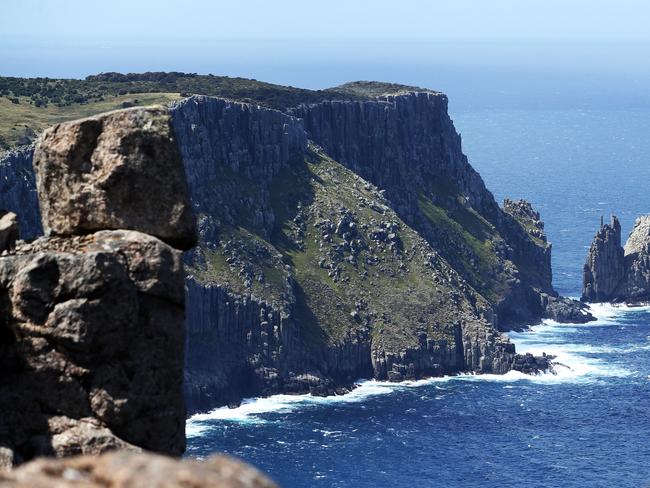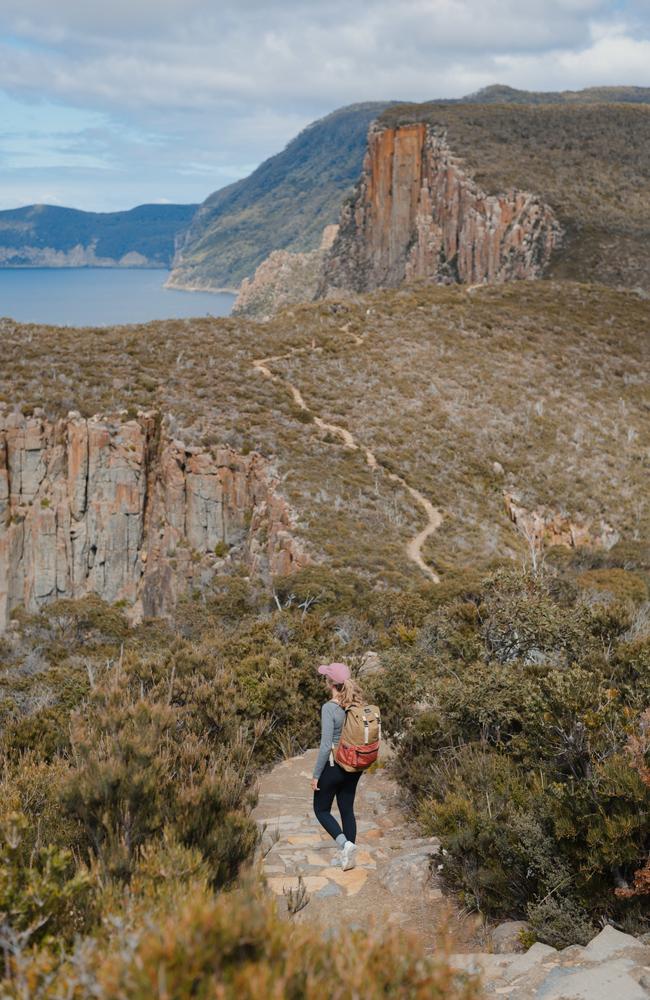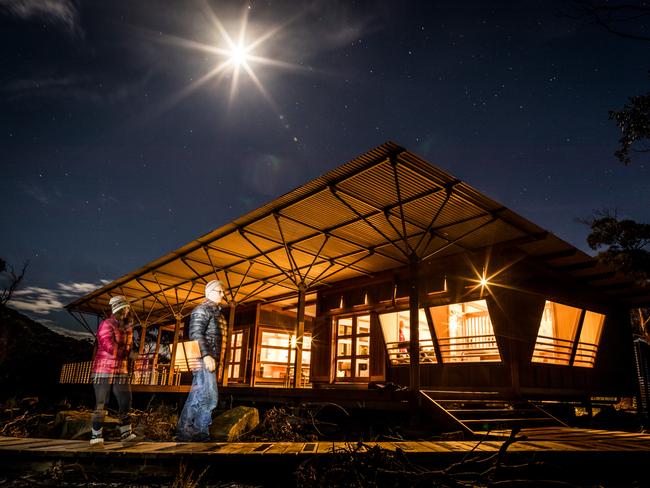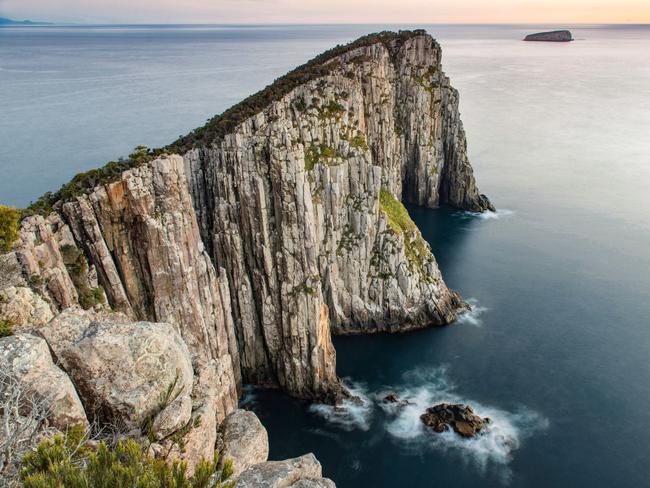Walk this way: Three Capes Track drawing nature-loving tourists to Tasmania in record numbers
Almost a decade since bursting onto the eco-tourism scene, the spectacular Three Capes Track has cemented its place in the Tasmanian tourism establishment, but some say the cost is too high.
Travel
Don't miss out on the headlines from Travel. Followed categories will be added to My News.
Almost a decade after bursting onto the eco-tourism scene, the spectacular Three Capes Track has cemented its place in the Tasmanian tourism establishment – drawing a record 15,000 walkers last financial year and injecting $5m per annum into the local economy.
Figures obtained from the Parks and Wildlife Service reveal that more than 80 per cent of the total 81,000 hikers to the Tasman Peninsula hut-based experience have arrived from interstate or overseas, generating valuable extra visitor nights in Tasmania and helping support 35 full-time equivalent jobs in the regions.

The four-day cliff-top walk was billed as Tasmania’s “next Overland Track” when it opened in December 2015 following years of planning and construction.
But with the government currently advancing plans to repeat the Three Capes magic on the West Coast’s Tyndall Range, a leading Tasmanian conservationist has warned that the environmental costs of such eco-tourism developments have become too high.
Of the 81,050 people who have undertaken the PWS-operated walk using the public huts, 78 per cent have come from mainland Australia and another 4 per cent from overseas.

The PWS said that thousands of additional walkers had also experienced the higher-end commercial walking product operated by the Tasmanian Walking Company, which commenced hosting walks in September 2018.
The Three Capes Track is already booked out for all but three days of the upcoming summer.
“Both the public and commercial walk options have been a massive success, with the combined walk options attracting a record visitation of 15,000 walkers in the financial year ending 30 June 2023,” a PWS spokesperson said.
“The revenue generated through walker fees on the PWS-managed Three Capes Experience public walk is between $4m–$5m annually. This is a gross revenue total and includes the amounts payable to the important third-party commercial operators who deliver critical components of the experience, which includes walk check-in and luggage storage as well as bus and ferry transfers.
“The balance of revenue is directly reinvested into protecting and caring for the natural and cultural values of the Tasman National Park and surrounding reserves.

“This includes undertaking fire preparedness activities, maintenance of tracks and infrastructure, along with provision of additional amenities and upgrades of the public huts and nearby campgrounds such as the popular Fortescue Bay campsite and amenities.”
The state government said the Three Capes Track Walks supported the direct employment of 35 full-time equivalent jobs across the PWS, and the walk’s business partners included the Tasmanian Walking Company, Port Arthur Historic Site, and Pennicott Wilderness Journeys.
And more than 90 per cent of walkers stay in Tasmania for additional nights before or after their walk, the Government said.
Amy Hills, chief executive of the Tourism Industry Council of Tasmania, said the Three Capes Track had grown to play a critical role in Tasmania’s overall tourism offering, representing the island state’s unique brand and providing a point of difference in a competitive market.
Ms Hills said tourists were increasingly keen to experience Tasmania’s world-class environment, and left the state with a heightened awareness of the importance of conservation.
“The Three Capes Track is an experience that is like no other, and one that can be enjoyed by a variety of different travellers, including families keen to escape the busyness of everyday life,” the TICT boss said.
“It’s experiences like the track that align to our newly released 2030 Visitor Economy Strategy which is focussed on encouraging our visitors to travel to our regional areas, invest in their economies and support regional jobs.”

Ms Hills backed the government plans for a new multi-day hut walk on the Tyndall Range, saying the TICT strategy’s central theme was ensuring that the visitor economy had an ongoing positive impact on Tasmania’s environment, community, and economy.
“The West Coast is yet another unique and dramatic landscape that visitors can immerse themselves in. There’s incredible heritage and history in that region and the walk’s potential to complement and work together with existing tourism products and experiences in the region is significant,” she said.
But Tasmanian Conservation Trust chief executive, Peter McGlone, claimed that the construction of the Three Capes Track and huts had destroyed large areas of native vegetation, including threatened plant species, and said Tasmanian taxpayers were subsidising a walk that many could not afford to do themselves.
Mr McGlone said the Tasman Peninsula tourist attraction had diminished the wilderness quality of the previously untracked western side of Cape Pillar, and warned of repeating the experience on the proposed West Coast development.
“Like the Three Capes Track, this is another state government tourism development that will require the clearance of native vegetation for new tracks and huts, degrade wilderness values and cost the taxpayers for construction and maintenance,” McGlone said.
The government has committed $40 million to the development of the state’s “next iconic walk,” saying the West Coast was selected as the location because of its extraordinary landscapes and links to hydropower and geological exploration heritage.
Three Capes Track
15,000 walkers in the 2022/2023 financial year
81,050 people since the track opened in December 2015
78 per cent coming from mainland Australia
4 per cent from overseas
62 per cent of total walkers aged 45 – 64 years old
Generates up to $5m annually
Supports 35 full-time equivalent jobs in the regions
Fees (public walk):
Adult $595
Concession $476
Child $476




